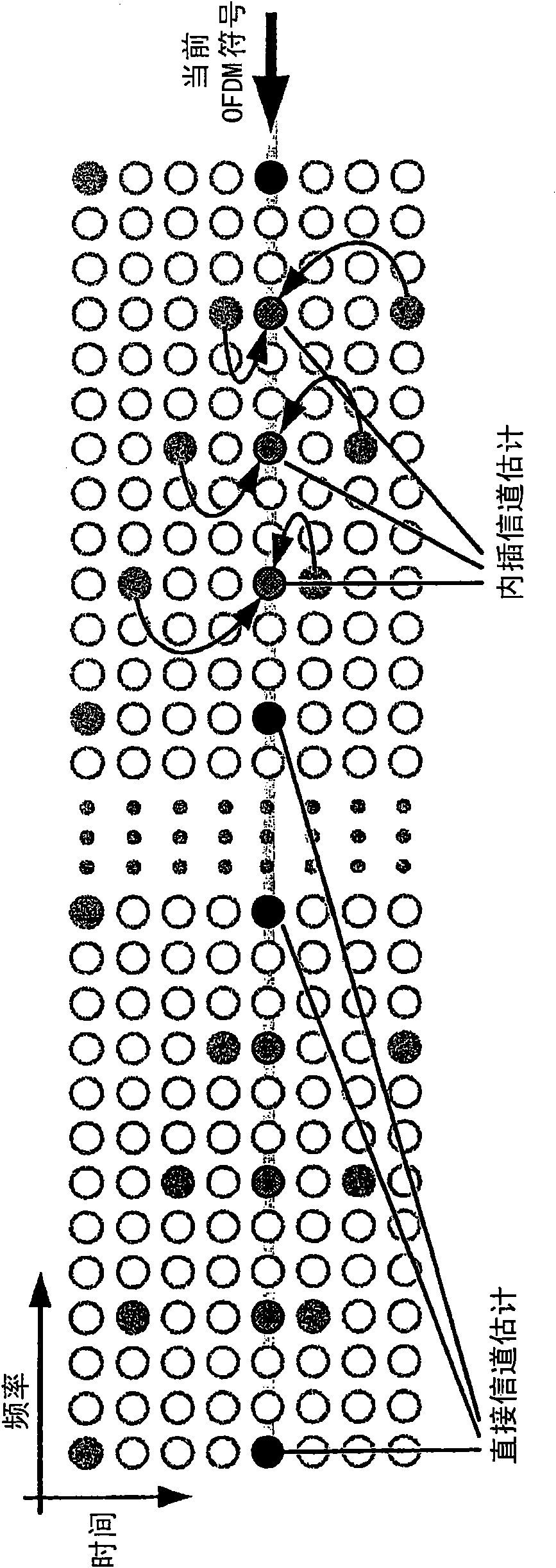Post-DTF/FFT time tracking algorithm for OFDM receivers
A time tracking and receiver technology, applied in baseband systems, channel estimation, digital transmission systems, etc., to solve problems such as inter-symbol interference
- Summary
- Abstract
- Description
- Claims
- Application Information
AI Technical Summary
Problems solved by technology
Method used
Image
Examples
Embodiment Construction
[0034] figure 1 A simplified schematic block diagram of a part of an OFDM receiver is shown, in which the time tracking proposed according to the present invention can be incorporated. Extract blocks with the same length as the DFT from the received composite digital baseband signal, and separate these blocks with the same length as the DFT by using unused blocks with the same length as the OFDM guard interval (110). DFT processing (120) is performed on each useful block, and each processing generates a vector of received data and pilot symbols in the frequency domain. The pilot symbol is a known transmission symbol, and the pilot symbol is provided to the receiver to realize various parameter estimation tasks including channel estimation (150). The calculated channel estimate of a DFT output vector is used to equalize the data symbols of the vector. The equalized symbols are fed to the QAM demapper (140) and finally to the decoder.
[0035] figure 2 A block diagram of the fir...
PUM
 Login to View More
Login to View More Abstract
Description
Claims
Application Information
 Login to View More
Login to View More - R&D
- Intellectual Property
- Life Sciences
- Materials
- Tech Scout
- Unparalleled Data Quality
- Higher Quality Content
- 60% Fewer Hallucinations
Browse by: Latest US Patents, China's latest patents, Technical Efficacy Thesaurus, Application Domain, Technology Topic, Popular Technical Reports.
© 2025 PatSnap. All rights reserved.Legal|Privacy policy|Modern Slavery Act Transparency Statement|Sitemap|About US| Contact US: help@patsnap.com



